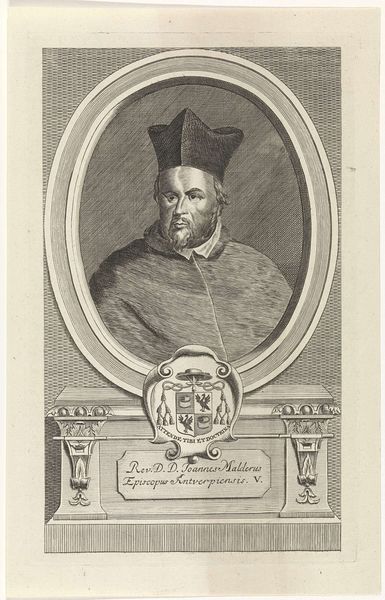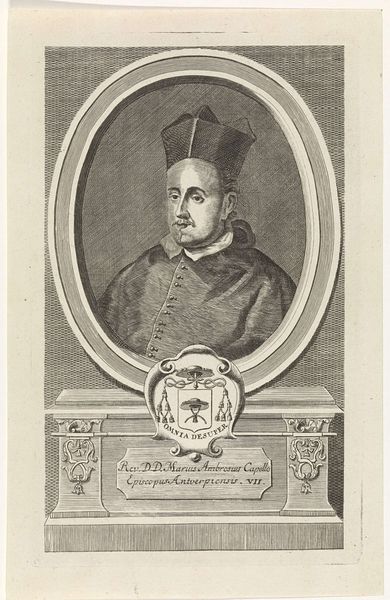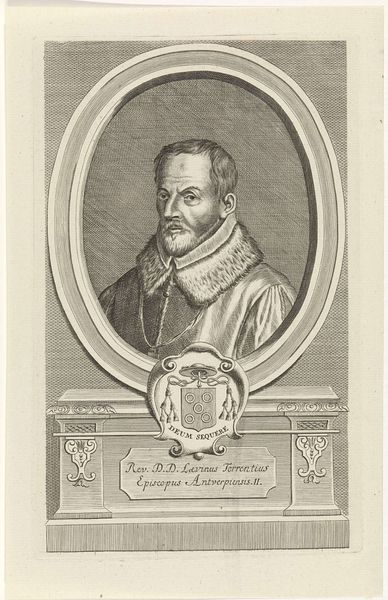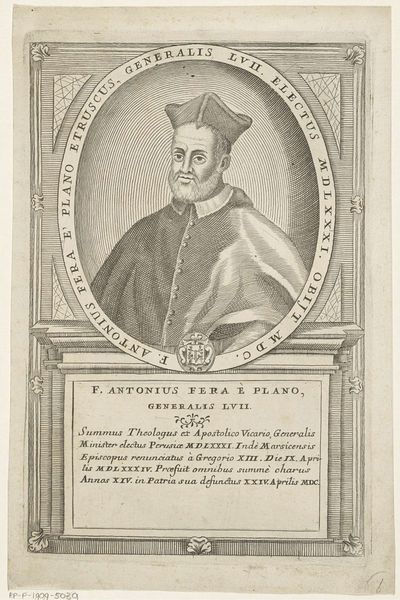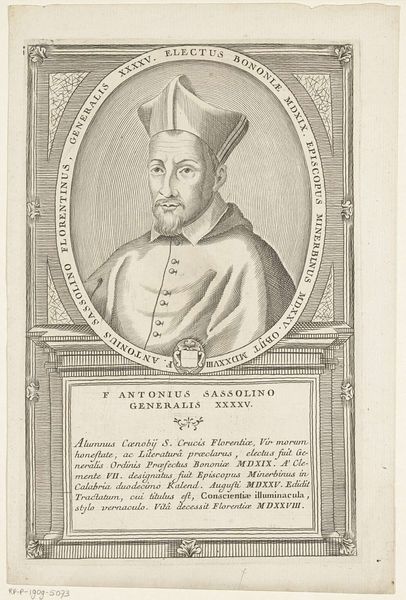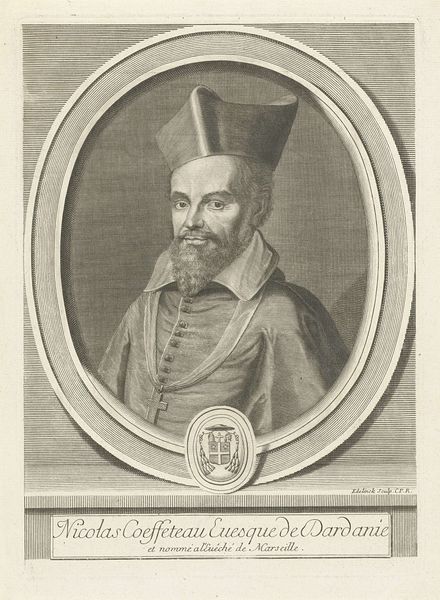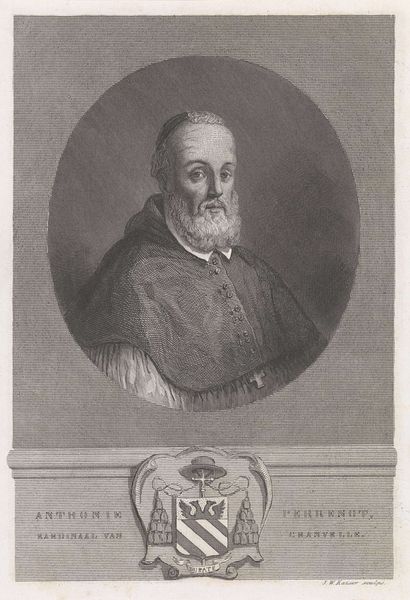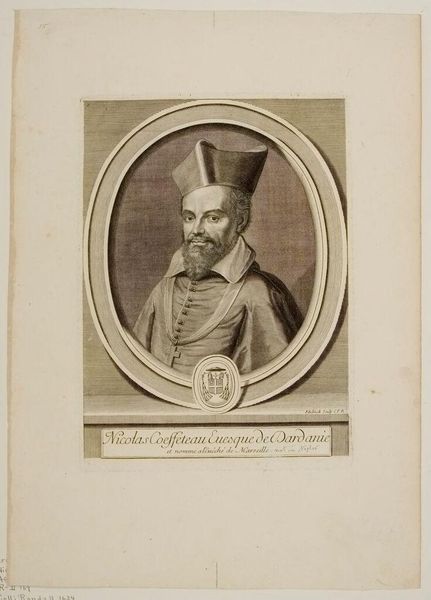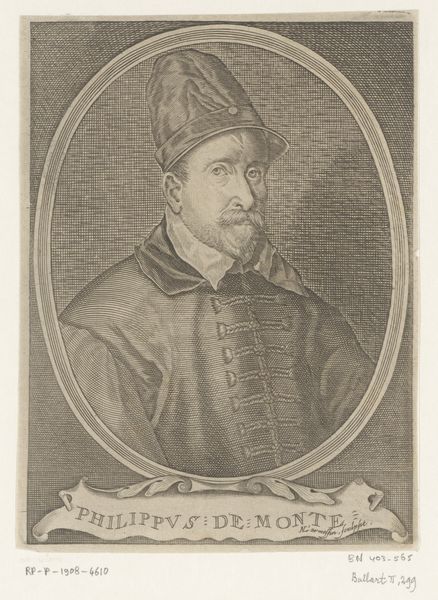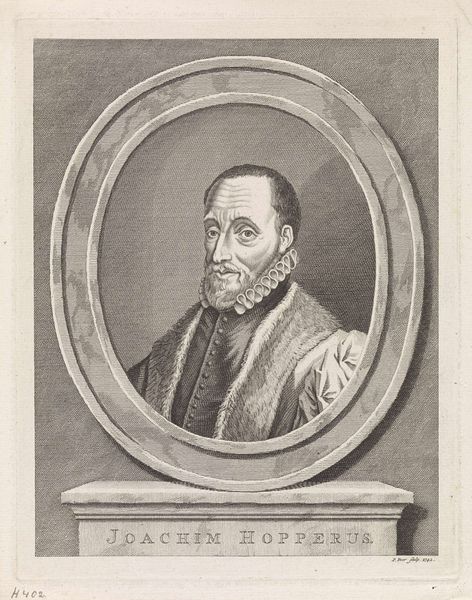
print, engraving
#
portrait
#
baroque
# print
#
line
#
engraving
Dimensions: height 264 mm, width 162 mm
Copyright: Rijks Museum: Open Domain
Curator: Let’s turn our attention to this engraved portrait of Gaspar Nemius by Jan Baptist Jongelinx. It’s thought to date from between 1710 and 1725. Editor: Immediately, I notice a kind of subdued gravitas. The hatching gives it a muted feel, appropriate given the subject's status, I suppose. There's an interesting formality in the way the composition is structured, very self-aware. Curator: Precisely. Jongelinx uses a very restrained linework to depict Nemius. The oval frame and the architectural plinth at the bottom contribute to the structured, classical feel of the piece. Semiotically, all the visual elements such as line weight, the composition and overall balance emphasizes formality. Editor: But who was Nemius, and why memorialize him in print? This portrait places him very specifically within a power structure; his clerical garments, the elaborate coat of arms, the Latin inscription… it speaks of institutional authority. As a bishop of Antwerp, how did he engage with the issues of his time? Curator: Good questions. While this engraving primarily functions as a visual representation of authority, it’s also worth noting Jongelinx's skill in rendering textures, from the subtle fabric of Nemius's robes to the polished stone of the plinth. This visual attention underscores a Baroque appreciation for detailed representation. Editor: Representation, yes, but it’s a curated representation. We are only getting the approved, elevated version of Gaspar Nemius, the Bishop. What about his other identities? Was he a force for progressive change, or did he reinforce existing hierarchies? Where are the dissenting voices in this visual narrative? It's a perfect piece of propaganda in a sense. Curator: A compelling counterpoint. Regardless of how it engages with the contemporary world, we see Jongelinx successfully uses the formal elements available in printmaking to immortalize this prominent religious figure, and his chosen techniques undeniably echo baroque ideals. Editor: Yes, but questioning how these “immortalizations” function ideologically is part of our job. It gives us a much fuller appreciation for Jongelinx’s technical decisions here.
Comments
No comments
Be the first to comment and join the conversation on the ultimate creative platform.
